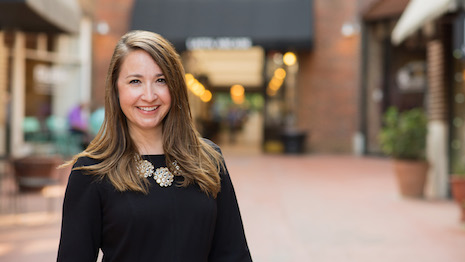 Jaime Bettencourt is senior vice president of business development and account management at Mood Media
Jaime Bettencourt is senior vice president of business development and account management at Mood Media
By Jaime Bettencourt A retail store, particularly that of a luxury brand, is far more than just a place to offer products. At its best, it becomes an emotionally rich, branded experience rather than merely a purchase transaction. The store is an extension of who you are as a brand, what you stand for and what you represent to the consumer. It is the living, breathing brand brought to life. Flagship stores certainly understand this concept. Ship shape Pick any flagship store from a successful brand you have visited – Levi's, REI, TopShop – and you probably reminisce first about what a great, experiential place it was. Flagships around the globe employ deliberate design choices, clever use of technology and sensorial experiences to make shopping trips memorable and interactive. Burberry’s London flagship, for example, is housed in an architecturally stunning 1820s building where history, heritage and craftsmanship are juxtaposed against the latest in modern digital technology. Among other technology-forward elements, Nike’s Paris flagship in Les Halles is equipped with a massive, 65-foot vertical video wall. Brands targeting teens and young adults, such as New Look, are bringing in live DJs to set the mood. AT&T’s Experience Store in Chicago is using the power of scent to make consumers feel more comfortable in-store. Brazilian-based footwear brand Melissa displays its shoes as though every pair is a piece of art on display in a contemporary, gallery-like space that fits the brand’s colorful aesthetic. But why should flagships have all the fun? Makes sense Not every customer can make it to London, New York, Paris or Sao Paulo to revel in these curated environments. Nor can every brand pour the size and scale of its flagship store elements into every one of its locations en masse. However, there are lessons to be learned from the flagships that can be applied to smaller stores, particularly in the area of sensorial experience. To some degree, every store can have elements of a flagship store that make it a more elevated, branded shopping experience. Think through all five senses, how flagships leverage those senses, and then apply to your own world. For example, today’s touch screen technology requires minimal space, yet provides customers access to a wealth of information, the kind of information they have become accustomed to finding online, as well as access to additional products that may only be physically housed in a flagship. In a recent “State of Brick & Mortar 2017” study we did, consumers cited the desire to touch and feel product as the top reason to shop bricks-and-mortar over online. While we may not all be able to offer a high-touch flagship experience such as trying on skis while strapping on a virtual reality headset as Swiss outdoor maker Mammut offers, we can make sure that everything, including those skis, is easily accessible and that consumers have the option to physically interact and play with product rather than just view it on a shelf. As for the sense of taste, even some of Tom’s smallest shoe stores have taken their flagship idea of a cafe and have fresh coffee and cookies available. Tuning in Of course, not every store can have a 65-foot vertical digital wall, but they can use smaller-scale digital screens to introduce content such as branded lifestyle imagery that helps set the tone of the shopping experience and helps convey the aspirations, or the tribe, one is buying into as part of the brand. Hand-pressed customization of leather goods by in-store craftsmen is not realistic in each store – as it is in Louis Vuitton’s SoHo store, for example – but behind-the-scenes on-screen footage of craftsmen or tailors or woodworkers or ski designers helps make any of your brand’s customization offerings feel a bit more special and more personal. Not all stores can have live DJs in the corner each day, but they can have highly customized, brand-appropriate music overhead that emotionally connects with guests. They cannot all have cafes or coffee bars tucked in a corner, but through the use of scent canisters, they can have the smells of a lovely café, or an ocean breeze, or an outdoor campfire, or a Tahitian jungle. CONSUMERS ARE increasingly craving – and expecting – branded experiences that will motivate them to move from the sofa into the store. Those experiences do not have to be on a bigger-than-life scale as they sometimes are in flagships, but they do have to exist in some form. Experiential retail innovation must be embraced. Jaime Bettencourt is senior vice president of business development and account management at Mood Media, Austin, TX. Reach her at [email protected].
